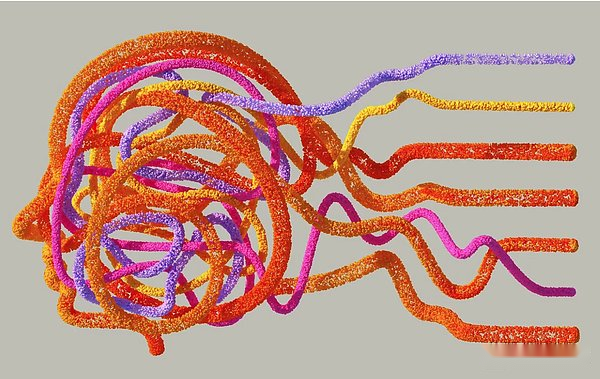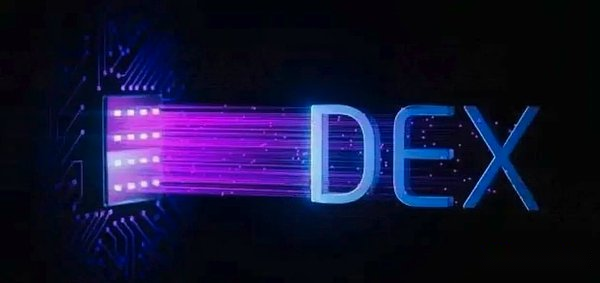
Author: Zeke Source: YBB Capital Translation: Shan Oppa, Bitchain Vision
Crypto World in 2025: Breaking the Immediate Stalemate and Rebuilding Outlook
introduction
From the inscription craze to the election of the first “crypto president”, 2024 is about to come to an end.This year, the crypto market experienced an unusual “bull market”, with altcoins performing poorly, meme coins dominating, and eventually everything returns to Bitcoin.Despite the troughs and ongoing disappointment in the process, overall, the crypto industry is moving in a more positive direction.Looking ahead to 2025, there are many areas worth paying attention to.This article will provide a brief outlook on the coming year based on recent views.
1. About the development of AI
At present, blockchain projects often pursue conceptual perfection and over-complex technology implementation, affecting user interaction and experience.Projects built around Intent architecture are particularly complex.Whether it is centralized (such as TG Bot), structured (preprocessing combined with off-chain) or distributed (such as Solver + Executor architecture), these intent-based projects have common common problems.For example, users still need to have a certain degree of DeFi understanding, and the intention expression must be clear, accurate and concise.When users propose complex or vague intents, current intent-driven projects are often difficult to respond and have limited scope of execution.Since Paradigm proposed this concept in mid-2023, most of the intention projects have remained at the theoretical level, which is not very helpful for guiding new users or lowering the entry threshold.However, judging from the development path of Ethereum Layer 2, the demand for such solutions is very urgent.

Looking back on the development of Layer 2 in the past few months, leading projects such asOP SuperchainThe alliance is expanding,ZkSync’s Elastic ChainandArbitrum OrbitThey are also following the example and trying to form their respective alliances.These alliances will enable internal interoperability through aggregation schemes to alleviate the fragmentation and lack of interoperability in the Ethereum Layer 2 ecosystem.In the future, this multi-chain competition will gradually narrow the competition of at least a few parties.However, from a broader perspective, as the crypto market recovers,Movement and FuelEmerging Layer 2 projects are launching the mainnet to try to compete for scarce liquidity in the altcoin market.For non-first-line projects, fragmentation and interoperability issues are still worsening.Virtual machines of different architectures may not even have wallet plugins that can communicate with each other.For ordinary blockchain users, the Layer 2 ecosystem is becoming increasingly complex, which will become a major obstacle to the development of non-financial applications.
To let Ethereum welcome more new users,The integration of ecosystems is a key prerequisite.An ecosystem that requires users to have a geek level will never be able to achieve “wide popularization”.In contrast, Solana and Ton’s strategy of counter-trend growth this year, lowering user thresholds and providing more Web2-style experiences has obviously played an important role in ecological growth.In other words, these two ecosystems are justIt simplifies the difficulty of asset issuance, making users’ operations on the blockchain almost indifferent.Therefore, Ethereum must adopt an integration strategy centered on user experience.However, given the consistent open attitude of core developers, it is unlikely that the entire Layer 2 ecosystem will be forcibly integrated.
I think,AI browser proxyIt is the answer to this problem.In the early days, many people imagined that AI would completely change the way application interactions, transitioning from single-point operations to cross-application operations, and creating a super app.For example, in a travel scenario, once the AI receives the user’s travel needs, it can automatically complete air ticket booking, customized travel routes, catering arrangements and schedule planning.If AI has long-term memory, future travel can also be automatically arranged according to user needs.
Currently, Google is about to launch a title calledProject MarinerAI browser proxy, based on Gemini model.According to a demonstration presented by Google Labs Director Jaclyn Konzelmann, when a user installs the AI proxy plug-in in the Chrome browser, a chat window will pop up on the right side of the browser.The user can instruct the agent to perform tasks, such as: “Create a shopping cart from this list at the grocery store.” The AI agent then automatically navigates to the grocery platform, adds the item to the cart, and jumps to the checkout page.The user confirms and completes the purchase (the agent does not have payment permission).OpenAI will also launch similar products next month.
It is worth noting that although Google’s Project Mariner is currently only for a few test users, I have experienced some AI agents for ordinary users developed by crypto projects.During a few hours of trial, the agent has about 60-70% accuracy in performing complex or fuzzy tasks.It can independently trade tokens on decentralized exchanges (DEXs) on multiple blockchains, and even transfer across assets to Layer 2 solutions.In the process, I simply need to provide the agent with the operation intention and enter the wallet password.
Of course, the platform still needs to call the centralized model API.So, what is the intersection of cryptocurrency and this development?I believeAI browser proxy will not only improve the user experience of intent parsing, but will also promote the development of AI wallets, decentralized computing and data projects.
Think about a simple question:Why has the beautiful vision of AI agents been gradually realized until now?
Looking back at the development of OpenAI, the reason why language models (LLM) develop faster than image generation models is because the Internet itself is a huge text corpus, providing rich materials for training.What restricts the development of language models is more aboutComputing power and energy bottlenecks.AI agents require a lot of manual annotation and feedback, and their inference process is expensive.
Cryptocurrencies are naturally suitable for incentivizing labor access.In this economic system, advanced users can provide a large amount of labeled data and feedback through decentralized means to earn tokens, while the underlying layer can integrate decentralized computing and data projects.Once the training is complete, it can be integrated into the wallet and DeFi project through the SDK to create a true AI wallet and ultimately form a closed loop.Other AI agent ideas can also be derived from this model, becauseAny AI agent for Web3 needs computing power, labeling and feedback to grow.
2. Stable Coin
Stablecoins have always been an important battlefield in the crypto market and an area with extremely high entry barriers.Its application value is not only widely recognized in the industry, but also attracts much attention in the traditional financial field.For example, this yearPayPal launches PYUSD,BlackRock and Ethena to issue USDb,as well asVanEck launches AUSD for Argentina and Southeast AsiaAll of these mark the traditional financial giants are accelerating their layout in the stablecoin market.
along withTetherandCircleContinue to consolidate the industry’s dominance, new players entering the stablecoin market have gradually differentiated into two categories:
1.Fiatcoin-supported stablecoinsThe issuer began to pay attention to emerging markets such as South America and specific application scenarios;
2.Algorithm stablecoinLow-risk financial products are increasingly used as underlying assets, such as Ethena and Usual (we mentioned it in previous articles).
From the trend,More “zero exposure” (delta-neutral) stablecoinsIt will pour into the market next year to compete for short liquidity on CEX.The scope of hedging assets will gradually expand from BTC and ETH to public chain tokens with higher risks and poor liquidity, striving to occupy the last niche area of the market.
As for similarUsualThis typeStable coins backed by short-term US bonds, I think the focus will still be onProtocol tokens and earnings innovationIn the above, because in terms of underlying assets, medium- and short-term government bonds are still the best choice.In addition, compared with the limited liquidity in CEX, such stablecoins have greater potential and room for development in areas with less competitive pressure.
Overall, the development of stablecoins is graduallyMore stable underlying assetsandDecentralized governanceGoing forward.But what I’m most looking forward to is to see it next yearCompletely decentralized without over-collateralizationThe stablecoin protocol appears.
3. Payment field
As the regulation of stablecoin in various countries gradually implements and accelerates its popularity,Payment fieldIt will become the new focus of downstream competition for stablecoins.pictureSolanaandMoveWith the advantages of high TPS and low Gas fees, this type of heterogeneous public chain will become the main infrastructure for payment applications.
The traditional payment market is quite mature and competitive, and is a typical “red ocean market”.So, what innovations can blockchain bring in the payment field?There are usually two directions:
1.Optimize cross-border payments
Blockchain can eliminatePre-financing needs, make cross-border remittances faster, cheaper and more convenient, and solve the problem of traditional systemsTrillions of dollars locked in pre-financingThe problem.
2.Serving emerging markets
As I mentioned in my previous article, the application value of stablecoins isAsia, Africa and Latin AmericaThe areas such as this have been verified.The strong financial inclusion of stablecoins enables residents of third-world countries to effectively deal with the high inflation problems caused by government instability, and participate in global financial activities and enjoy cutting-edge virtual services.

At the 7th EthCC Conference,Lily Liu, Solana Foundation ManagerThe concept of “PayFi” was proposed, bringing more possibilities to blockchain payments.PayFi contains two core concepts:
1.Real-time settlement (T+0 settlement)
PayFi can achieve the same day or multiple settlements, eliminating the inherent delays and complexities in traditional financial systems, and greatly improving the speed of capital flow.
2.“Buy Now, Pay Never” (Buy Now, Pay Never)
For example, a user deposits $50 into a loan product and buys a cup of $5 coffee.Once the accumulated interest reaches $5, the interest will automatically pay for the coffee fee, and the remaining funds will be unlocked and returned to the user account.
This leads to many ideas.For example, in terms of use cases, the financing needs of emerging projects can be met through PayFi on the blockchain, providing a safer and more transparent way of entry and exit.Currency exchange during travel will no longer require various physical financial institutions.Payment and collection times will be more flexible (earn interest after late collections, and discounts after early payments).In addition, the ways of generating income will also be diversified.In addition to depositing stablecoins into lending products to earn interest, I personally believe that the types of stablecoins should also be convenient for exchange.
In the future, as more and more emerging stablecoins enter the market, users can choose the type of stablecoin that is most suitable for them according to their risk preferences, while earning protocol tokens and higher stablecoin interest.If this payment system becomes mainstream,The growth potential in DeFi will be huge.
4. Decentralized exchange (DEX)
As mentioned above, Layer 2’s fragmentation and lack of interoperability are becoming an important obstacle to the development of the crypto market.However, there is another problem with this development path:Excessive block space.Infrastructure (Infra) is developing far faster than DApp (decentralized applications).
This imbalance may naturally eliminate many long-tail chains in the next few years, which is also a headache for Ethereum.Because of EthereumData availability (DA) pricing mechanism is incomplete, Layer 2 brings very limited positive feedback to the Ethereum main network.
Looking back, those public chains that grew against the trend in the bear market basically rely onStrong community, complete ecosystem and marketing advantages.These advantages are mainly reflected in the asset issuance platform, which has promoted the rapid growth of total locked positions (TVL).Therefore, not all Layer 2 can replicate this “attention economy” model.The lack of popular applications will continue in the next year.
In terms of future trends, a possible development direction is what we mentioned earlierAI Agent Requirements.In the short term, other clear trends include:
• On-chainOrder Book DEX
• Privacy Solutions
• Payment-related technology stack
• On-chain decision making tools
I’m personallyOn-chain order book DEXThe development of theThe mainstream of next-generation decentralized exchanges.

After all, from the perspective of AMM’s development, the complexity of its technical path is increasing, but the marginal efficiency improvement is getting smaller and smaller.We have discussed this issue in previous articles about Uniswap.
However, for Layer 2,The performance and Gas fee limits are still very obvious.therefore,Matching algorithm and Gas cost optimizationInnovation will become a key challenge.
5. Asset issuance is still mainstream
From 2023 to the present, from inscriptions to AI Meme platform,Asset issuance methodIt has been throughout the past year.If the timeline is lengthened, asset issuance has been the core theme of the crypto market since the ICO era.The only thing that changed isExternal packaging and entry threshold.
On the positive side, it is the market’s demand for user participation, which has promoted the development of early infrastructure and DeFi.As technology is gradually recognized and accepted, blockchain has entered the mainstream and has been deeply integrated with the real world.
The negative side is that market competition is becoming more pure and absurd.The lowering of the threshold for asset issuance means that the “dark forest” of the crypto market has become more dangerous.Nowadays, a large zero-sum game can be started with just a few clicks, accompanied by some pictures and a few lines of text.
But why not guide this force in a positive direction and promote the development of the industry?
For example, some AI Meme projects are beginning to graduallyEvolution to actual AI agents, not the AI assistant in the past who only knows “nonsense”.The recent popular DeSci (Decentralized Science) can also be regarded as a “scientific version of ICO”.Although it is still centered on meme drive, in the long run, combined with the advantages of blockchain, DeSci can make traditional scientific research more transparent, easy to disseminate, easier to raise funds, and promote scientific research cooperation on a global scale.
However, it remains to be seen whether this model can succeed in practice or how it develops.
In fact, the idea behind DeSci is similar to what I mentioned in GameFi related articles:How blockchain can drive independent gaming in the face of shortage of funds and manpower in small studios.
The core problems facing on-chain financing are:
•The threshold for asset issuance is too low
•Lack of restrictions
•Extremely strong financing ability
This may be attributed to the extremely low entry threshold for blockchain.How to restrict the use of funds through rules and force the project team to continue to create truly valuable products is the focus of our attention.
Let players compete freely and builders continue to move forward.This is the prerequisite for the sustainable development of blockchain.We may see more iterative versions of the “ICO” mode over the next year, but what I really expect is that in this grand game,We will be able to usher in the next “DeFi Summer”.








